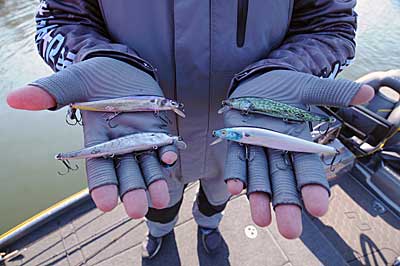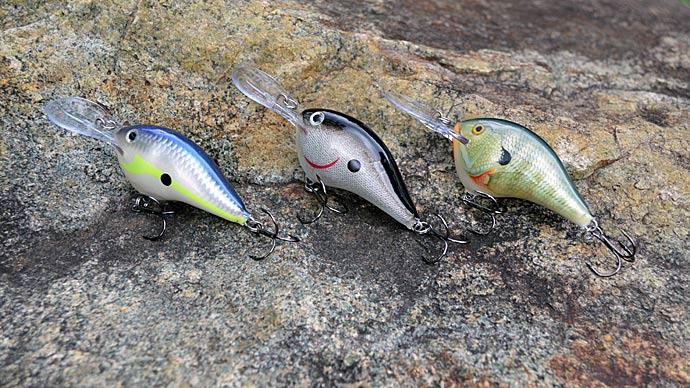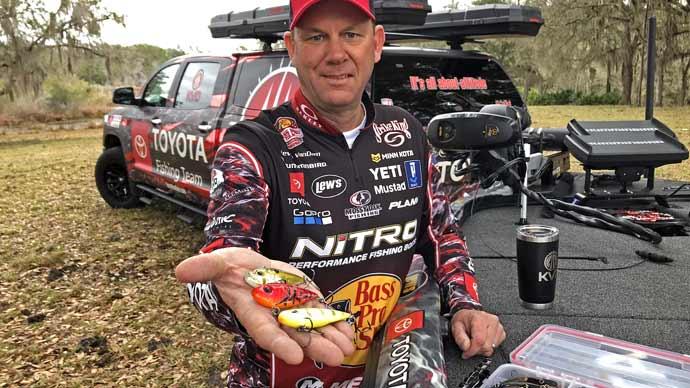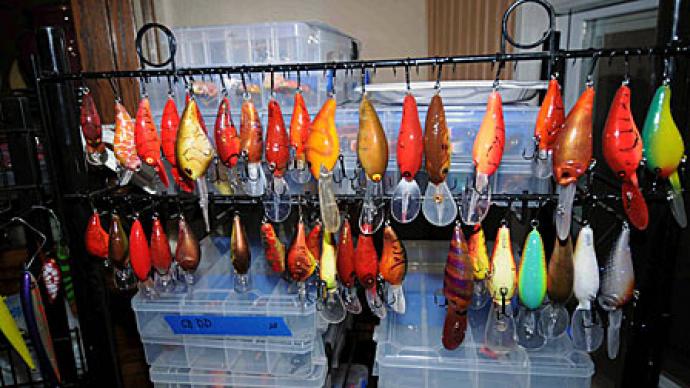
Sometimes Rick Fishback goes wild with lure colors, and other times he takes a milder approach in selecting hues for his baits.
Parking lots at ramps full of trucks, trailers, and more boats all over lakes, even during the middle of the week, have convinced Fishback that choosing the right lure colors has become more critical than ever.
“With all the pressure going on now in fishing, color is a big thing because the bass are seeing it all-- especially the generic stuff,” Fishback says. “So I think the more realistic colors get you a few more bites. It also helps to match the hatch as far as color goes.
“I follow some of the old simple rules (for choosing colors), but I also have a new spin on it for what I like to do,” Fishback says. “The clearer the water and the brighter the day, the more realistic I like to keep my colors. I want something that looks like crappie or looks like shad."
The Missouri angler makes color choices for hard baits in his business as the co-owner of CrankWraps (www.crankwraps.com), a realistic adhesive skin that applies to various hard plastic lures. “Our colors are real photo images,” Fishback says. “It is not a paint job. It is a picture of a baitfish or crawfish. It is a vinyl application already cut and templated to fit whatever bait you might have.”
CrankWraps can be applied to any new or old hard plastic baits and even used as a seal for cracked lures. Fishback notes the wraps are available in 20 primary colors and 190 different lure sizes ranging from glide baits to jerkbaits to crankbaits. You can apply the wrap in about 10 seconds by peeling it out of its packaging, lining up the wrap with the eye and tail of the lure, and then smoothing the skin onto it.

Water clarity determines which lure colors Fishback selects for his hard plastic lures. In cold, clear water on a sunny day, Fishback prefers throwing jerkbaits adorned with the CrankWraps white crappie pattern because he is fishing the lure slowly, which gives the bass a chance to take a longer and closer look at the realistic-looking bait.
Fishback opts for a jerkbait in a wild color during the winter when the water temperature is around 39 degrees and just starting to nudge into the 40s. "Those first fish of the year seem to want the wilder colors more,” he says. His color choice is the CrankWraps Ozark Ruiner, a bright purple back, chartreuse sides, and orange belly pattern, which he notes bass can see a long distance in the clear water.
Bolder and solid colors work best for Fishback in dirty water and cloudy or low-light conditions. "You will notice that your bigger fish will come on your bolder or more solid colors," Fishback says. "A translucent bait like those from the factory gets bites, and sometimes they get many bites. But it seems like those bigger fish like those older non-translucent colors."
When fishing stained water on a cloudy day, the regional tournament competitor opts for the CrankWraps Fishback Attack hue, a color pattern consisting of a bold solid white body with a blue head. He prefers bright yellow or green chartreuse hues for fishing in dirty water on cloudy days. "I want something bright that is going to cut that water so the fish can see a little bit farther and get to the lure," Fishback says. When fishing murky or muddy water, he selects a square bill crankbait in bold yellow or white colors.

Matching the hatch is another factor determining Fishback's color choice for his hard baits. In the lakes he frequently fishes, gizzard shad and crappie are the common bass forage, so his top choices are the CrankWraps Gizz Shad and White Crappie patterns. “Everything will get a bite, no doubt," Fishback says. "We all have had plenty of bites on wild colors, but to be consistent, I think matching the hatch is a big deal. I fish (the Gizz Shad pattern) when fishing close to the bank or towards the back of a creek arm. When fishing brush piles or docks, I throw the white crappie pattern because that is where the crappie hang out. I believe in throwing what the bass are feeding on."
When water temperatures climb into the 45- to 55-degree range, Fishback notices bass start eating crawfish. So Fishback selects Storm Lures, Wiggle Warts, and Spro Rk Crawler crankbaits to serve the fish a mudbug imitator. His favorite crawfish color pattern is the CrankWraps Fire Green, consisting of green, reddish-brown, and orange hues.
Fishback observes that some lure color choices are determined by the region or lakes he is fishing. "When we go up north towards the Iowa border, and farther north, there isn’t as much of a shad population up there, and the bass will focus more on a bluegill or a sunfish,” he says. “I have played that game in that region, and the bass will hardly eat a shad-colored bait up there. You must throw a bluegill or sunfish-colored bait to get bit up that way."
The Missouri angler has also noticed that lure color choices vary from one lake to the next. For example, his white crappie pattern produces well on Lake of the Ozarks and Pomme de Terre Lake but is much less effective on nearby Stockton Lake, where Fishback thinks bass prefer a different forage.
BassResource may receive a portion of revenues if you make a purchase using a link above.




